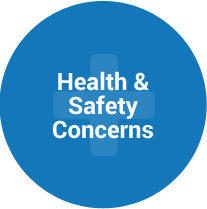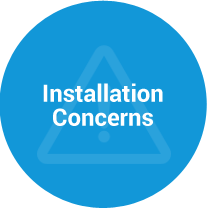Innovating Our Solutions and Our Website. As we introduce new solutions to better meet your needs, we’re also rolling out a new and improved website. Thank you for your patience during this time.
Epoxy Lining is a general term for a variety of different plastic resins used on hot and cold water supply pipes, sprinkler lines, HVAC piping, gas lines and certain drain, waste and vent piping. The National Sanitation Foundation (NSF) and U.S. Environmental Protection Agency (EPA) have certified some epoxy linings for carrying potable drinking water. Epoxy resins are generally not certified as a “structural improvement” to the existing piping system.
Click on the icons below to read more about the concerns and challenges of epoxy pipe lining.
Health & Safety Concerns
Bisphenol-A (BPA), Benzene and Xlyene
BPA has been found to leach out of epoxy resins into drinking water with higher water temperatures yielding higher levels of BPA1. Given the concerns over BPA contamination in recent years (and the corresponding negative health effects), it is recommended to always check with both the installer and the manufacturer to ensure the plastic going inside the domestic water pipes is BPA free.2. Studies have shown that even at low doses [BPA] has been linked to health and environmental problems. [As] a precautionary approach, therefore, many people have reasonably concluded that materials with the potential to release BPA should not be used in drinking water pipes.3
In addition, “encourage [customers] to verify that potential contractors are complying with [the specified] application conditions. If they are not, despite their ANSI/NSF Standard 61 certifications, their field installations MAY NOT match the safety levels shown in their lab testing.”4
Epoxy Lining Conclusions
The overwhelming amount of risk associated with epoxy lining, coupled with observations of failed installations and their consequences, has led the authors to conclude that epoxy lining pipes within the building envelope is not a comparable alternative to pipe replacement. Before making an investment decision, it is always advisable for a community to explore all its options, including a repipe, to ensure their property is making the most informed decision possible about fixing its leaking pipes.










